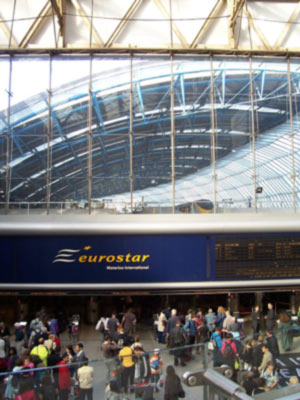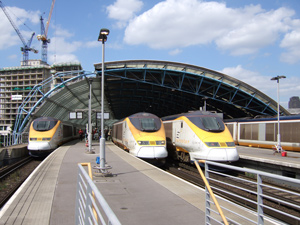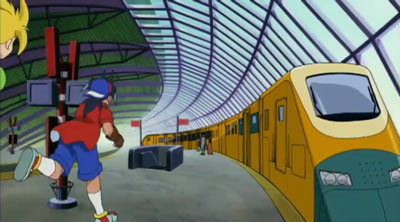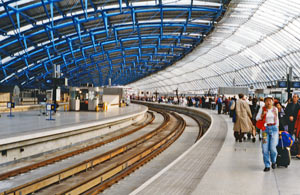Featured in Season 1, Episode 32: Darkness at the End of the Tunnel. The show never explicitly states where the Bladebreakers are, but as a Londoner myself I recognized this instantly. It’s clear that they’re taking the Eurostar train service because Kenny mentions they’ll be travelling on the “Chunnel” – a slang term for the Channel Tunnel that never quite stuck in real life. If you’re a younger Londoner, this might seem confusing. London Waterloo has no direct train to Paris after all; Paris trains leave from St Pancras International.
However, this series originally aired in 2001. At that time, all Eurostar services left exclusively from Waterloo International. The station doesn’t technically exist anymore and was closed in 2007 and the building now forms part of the main Waterloo Station.


Now let’s take a look at the real life Waterloo International as it looked back in the day:

One thing did strike me as very odd about this location: the animation team clearly changed a few colours around in order for it to not be a like-for-like replica of the real life station, but had absolutely no issue drawing a copy of the stripes from the Eurostar logo.
There’s no better example of these changes than the fact that they changed the colour of the trains completely. Here’s what the Eurostar services looked like at Waterloo International:

And here’s how Beyblade depicted them:

And just for reference, here’s a real life shot of that shows some of the platform you can see in that last scene:

CC BY-SA 2.0
Bonus Train Nerd Fact
In the above image you might notice that the Eurostar tracks have electrified third rails – with wooden kickboards either side to protect station personnel. The only part of the journey that used this 750v DC third rail system was the London to Kent stretch. This required the Eurostar trains to have specially-equipped current collection shoes.
Because the French side of the route uses overhead lines and not third rail, the shoes ran the risk of coming into contact with trackside equipment and damaging it. Drivers had to mechanically retract the shoes before they entered the Channel Tunnel and raised their pantographs for the overhead line.
One final low-tech last-resort measure was also implemented: Concrete blocks. These were placed at the Calais end of the tunnel and protected the French trackside equipment. If a driver forgot to retract his or her shoes, the blocks would rip them from the train.
